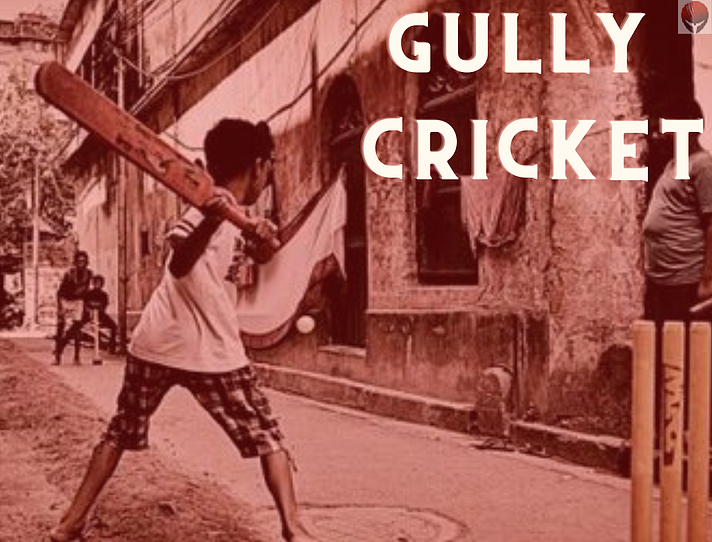The place where it all starts- Gully cricket: The rules of the game and what it is?
“Shamko 5 baje milte hai park mein. Ball leke aana”- Indian cricket lovers raise your hands if you remember this.
You too would be drawn to the energy of kids playing cricket in the streets and narrow lanes of the Indian subcontinent. These young players participate in a pretty serious game of Gully or Gali cricket, played all over India.
The surprising thing is that it’s just like watching a professional match in a stadium; in fact, the intensity of shouting, screaming, and sledging is more often.. And the bonding is inexplicable!
What is Gully cricket?
Similar to backyard cricket popular in Australia, New Zealand, and South Africa, Gully cricket (a common term in the Indian subcontinent) is an informal form of cricket played in India, Bangladesh, Pakistan, and Sri Lanka.
Gully cricket is also referred to as street cricket in some parts of the world.

Who can play and where can one play Gully cricket?
One can play Gully cricket in the house, outside the house, on the streets, in the backyard, on the beach, at the park, and even on the terrace (Be safe there!).
Won’t it be amazing to score these matches and add the same in your personal profiles? Imagine a digital place where all your matches are on record and you can even analyze your play?
But did you know you can not only score but also live stream Gully cricket matches and tournaments? News to you, right?
With the help of CricHeroes App you can score and broadcast grassroots cricket tournaments live ball to ball. The app provides a very easy to use platform where players and teams can upload their profiles, score and live stream matches, follow each other and do a lot more.
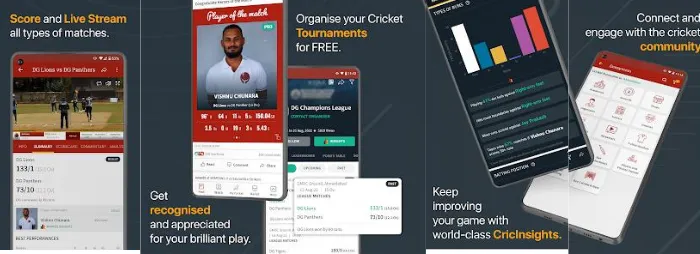
If you want to find out about players and teams in your vicinity, even that’s visible on CricHeroes. We recommend using this info before you head out for a round of match with your rivals.
What are the common rules of Gully cricket or street cricket?
Honestly, rules in Gully cricket are improvised versions of professional cricket. Right from the number of balls to taking wickets to scoring boundaries, invention and changes are an integral part of gully cricket.
Toss
Toss isn’t a formal event however, at some places, it is taken seriously.
When teams get together, a toss may happen but with individual players and smaller teams, a decision to bat and field first may be taken with the consensus of all players. But did you know a coin is not the only way to toss?
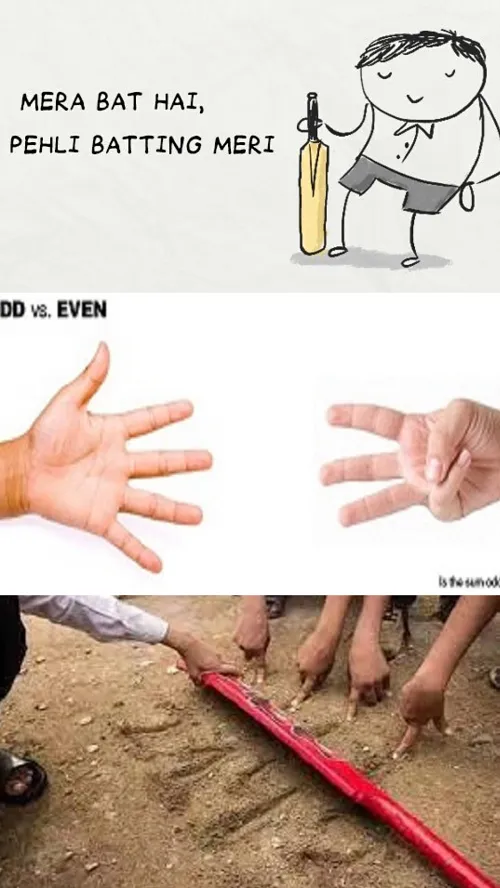
Some prefer small-sized wrappers/pouches with English written on one side and Hindi on the other.
some use flat stones, pieces of tile, or broken pots. The game of odd and even or stone paper scissors is conducted, and the best of three wins the toss. And in some cases, the winning team would automatically win the toss for the next game.
Fun fact: There is a toss feature on the CricHeroes App for times you have no access to any of these ideas!
Overs
The length of a match is subjective and depends on the time players have.
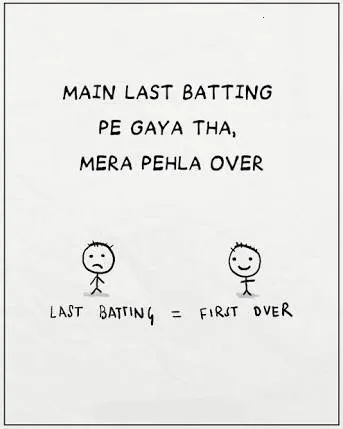
5 to 6 overs are commonly played to accommodate two teams within the allowed time limit.
Umpire
A gully cricket match doesn’t stress so much on having umpires.. Tracking scores and announcing wickets are done in unison. However, many street cricket matches use a makeshift umpire from the opposite team. Doing this also leads to many uncalled-for quarrels and disagreements.

Secondly, the umpire doesn’t follow the exact set of hand gestures and rules, so a little improvisation is added.
You can avoid these little quarrels by having an umpire in your next match!
Bowling
The first ball is often the trial ball. Runs scored and wickets claimed are not counted in a trial ball. We notice underarm and overarm bowling in these matches, however, in a restricted space, underarm bowling is a sensible option. Additionally, the ball is expected to bounce once before reaching the batter..
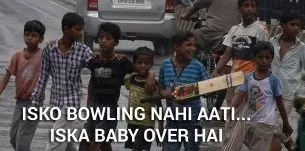
Runs
Runs have the most improvised set of rules in gully cricket. Running between the wickets is restricted by how far the ball rolls away. In some cases, two-runs are awarded after the ball reaches a specific spot. Sixes may not even exist in some cases and the spaces don’t allow a fair amount of area for boundaries. There are often no runs behind the wickets due to a lack of fielders.

However, some rules are different for 6s and 4s in box cricket.
You can score your box cricket matches here.
Stumps
The most peculiar thing you may come across in Gully cricket format is the stumps. It could be painted cardboard, a wall, three branches of a tree, bricks, or anything that is a look-alike of cricket stumps.
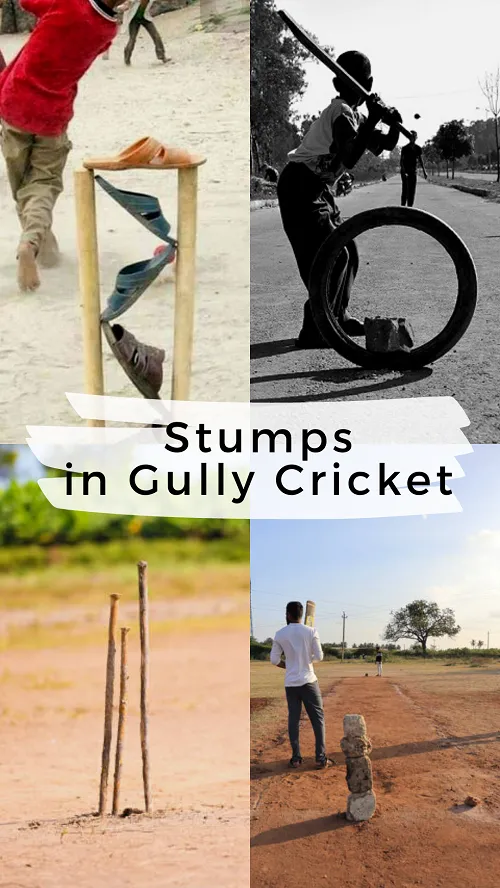
Teams
Teams are equally divided as per the number of players available. If the headcount is odd-numbered then one extra player becomes a jack and plays for both teams. A low count of people makes it an individual-level match where everyone gets a chance to bat and ball.
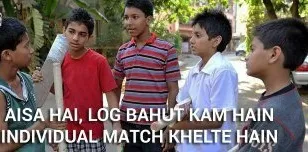
Type of Wickets
Stumped and caught out are the most common ways to get out in gully cricket. A few added types are lost ball and hit out.
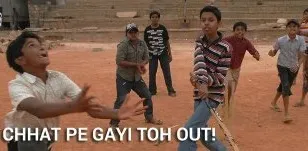
Ball type
Considering safety and price, a tennis ball or a rubber ball is often the first choice of gully cricketers. Tennis balls bounce better at a slow speed.

What equipment can you use?
The equipment in gully cricket is influenced by professional cricket but improvised according to availability. A bat, ball, and stumps are enough to kickstart a basic match. The addition of safety gear depends on the player and availability.
How does Gully cricket help budding cricketers?
This may sound absurd at first that a cricket format without any established rules can help budding cricketers in turning into professional cricketers but that’s true. With the minimal street cricket rules and space limitations, young players can benefit in the following ways:
- Improves different ranges of bowling
- Batters learn to hit more boundaries
- Enhance front foot and back foot defense
- Limited space on the leg side or the off-side, the batter learns to score a boundary by hitting straight down the ground.
- Best way to practice running between the wickets
- Improves catching in short distances
- Makes you a bowling expert
- Best chance to attempt a direct hit
FAQs
How many overs are there in Gully Cricket?
Mostly, the overs in street cricket vary from 5–10 overs.
Which ball is best for gully cricket?
A tennis ball is claimed to be the most preferred choice of gully cricketers.
What is Gully in professional cricket?
The gully in professional cricket is the portion of a cricket field where one of the slip fielders stands. It is located offside right behind the square of the wicket. As the ball moves very quickly in this area of the field, gully fielders are expected to react quickly.
If you are a cricket enthusiast, unarguably you have experienced street or galli cricket at some point in your life (or could be playing today).
What is the fondest memory from your gully cricket stint? What was the biggest learning? Don’t forget to share those priceless memories in the comment section!
I am Dhaval Jain, SEO All-Rounder at CricHeroes.
CricHeroes is an ultimate Cricket Scoring App and the world’s only true Cricket Network. With more than 30 million registered cricketers using CricHeroes to Live Score their Local Cricket Matches and Tournaments, CricHeroes is already the number one Cricket Scoring App in the world!
